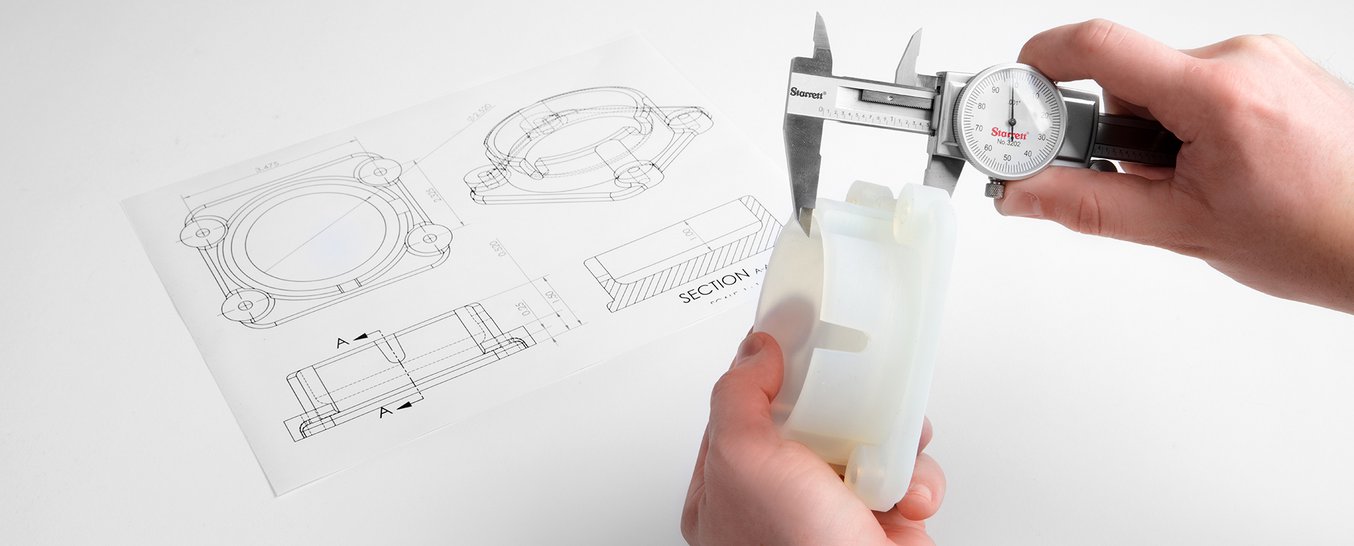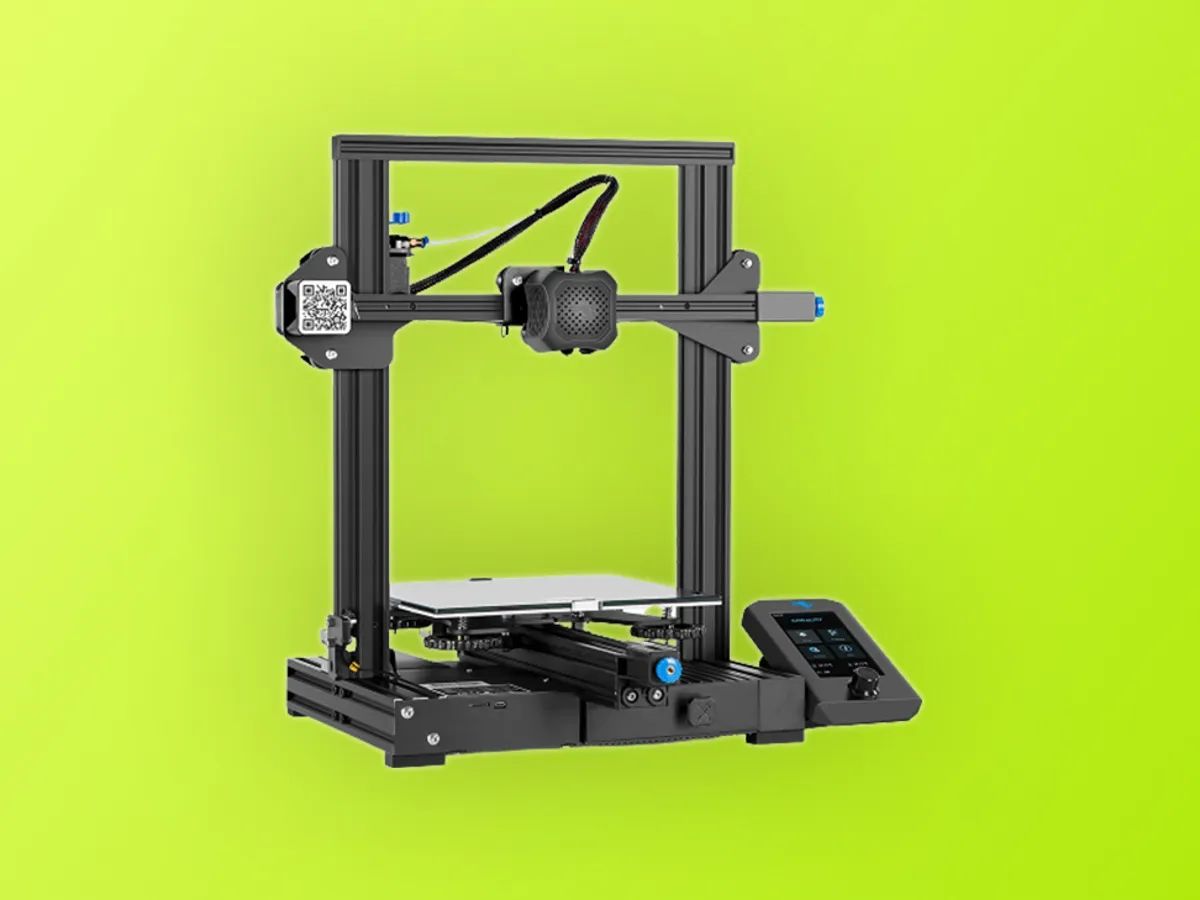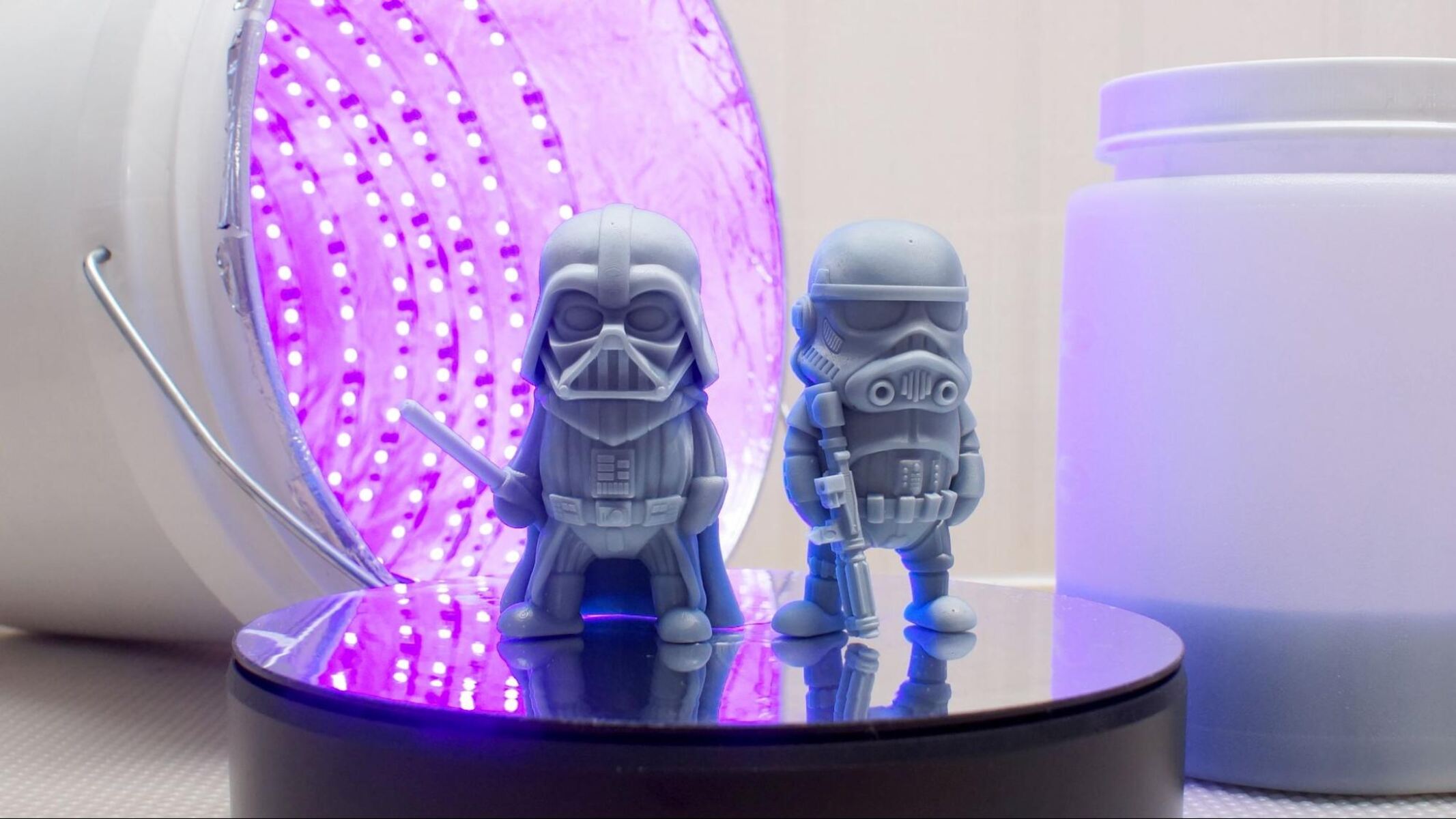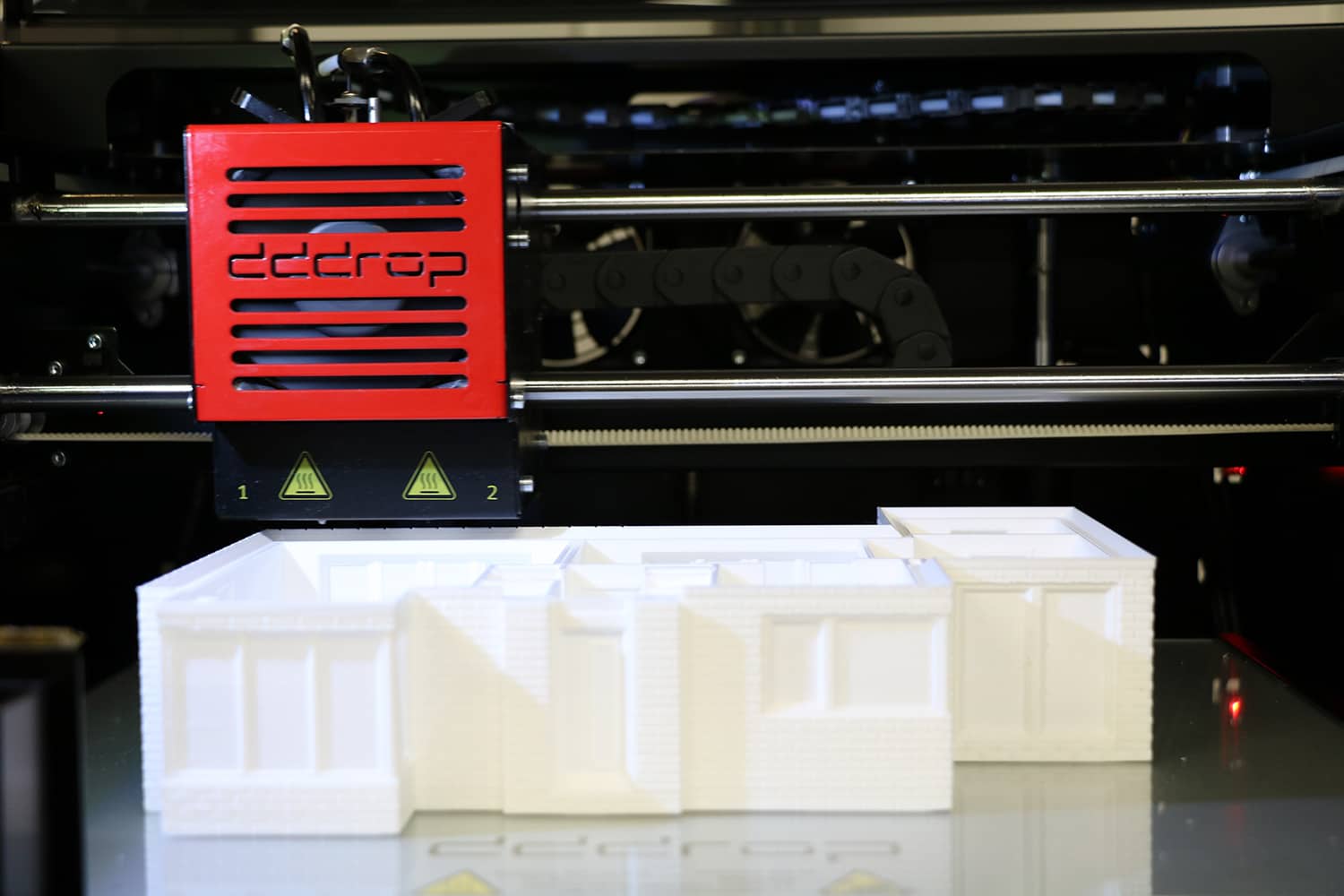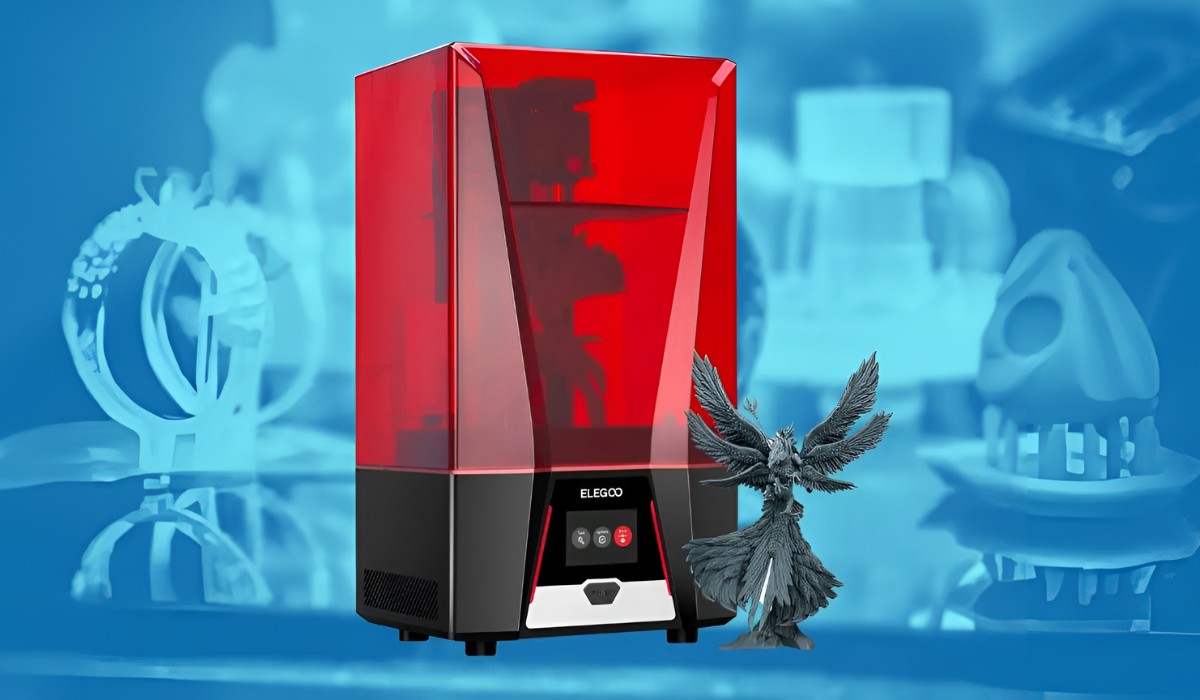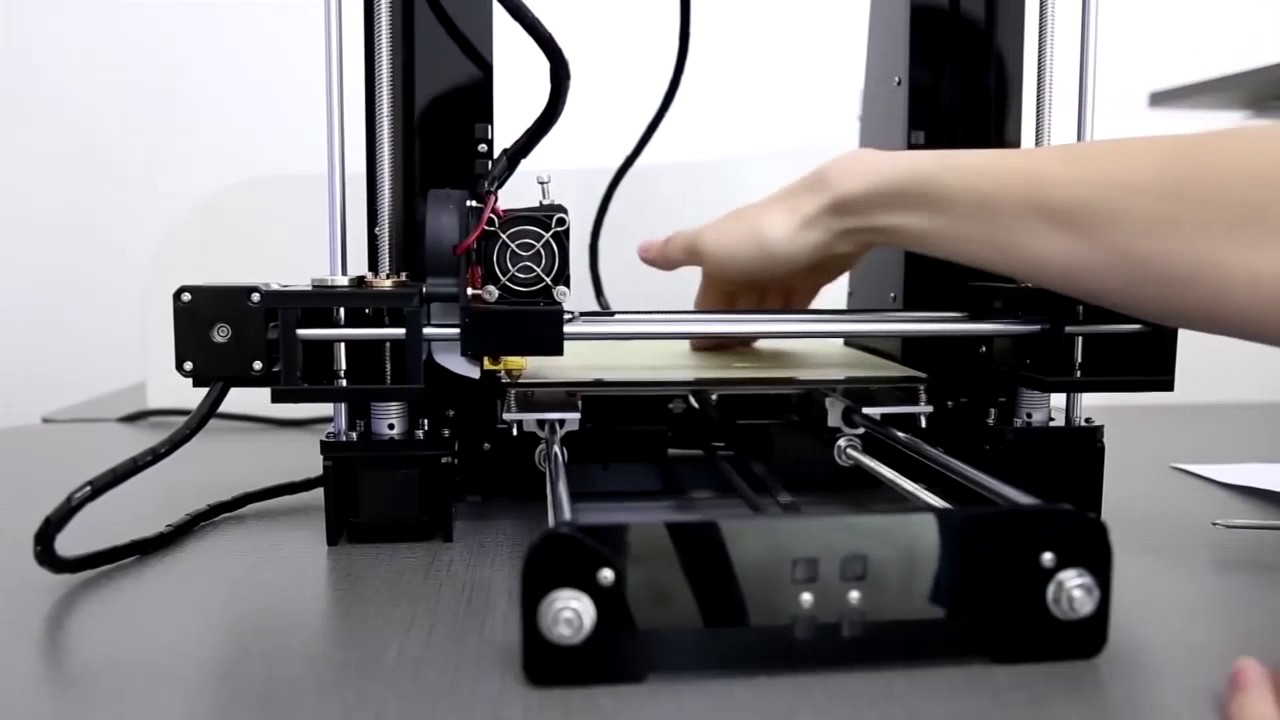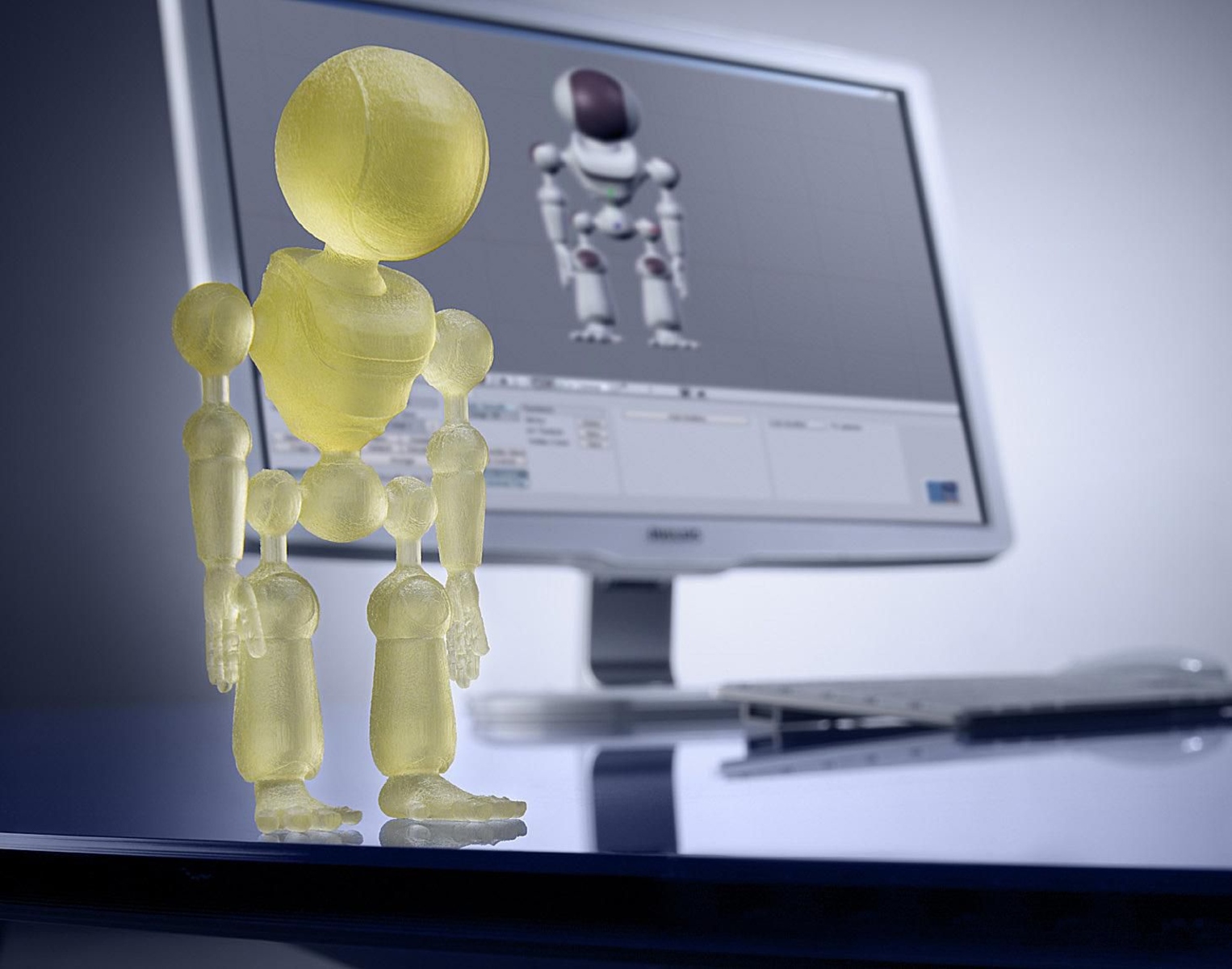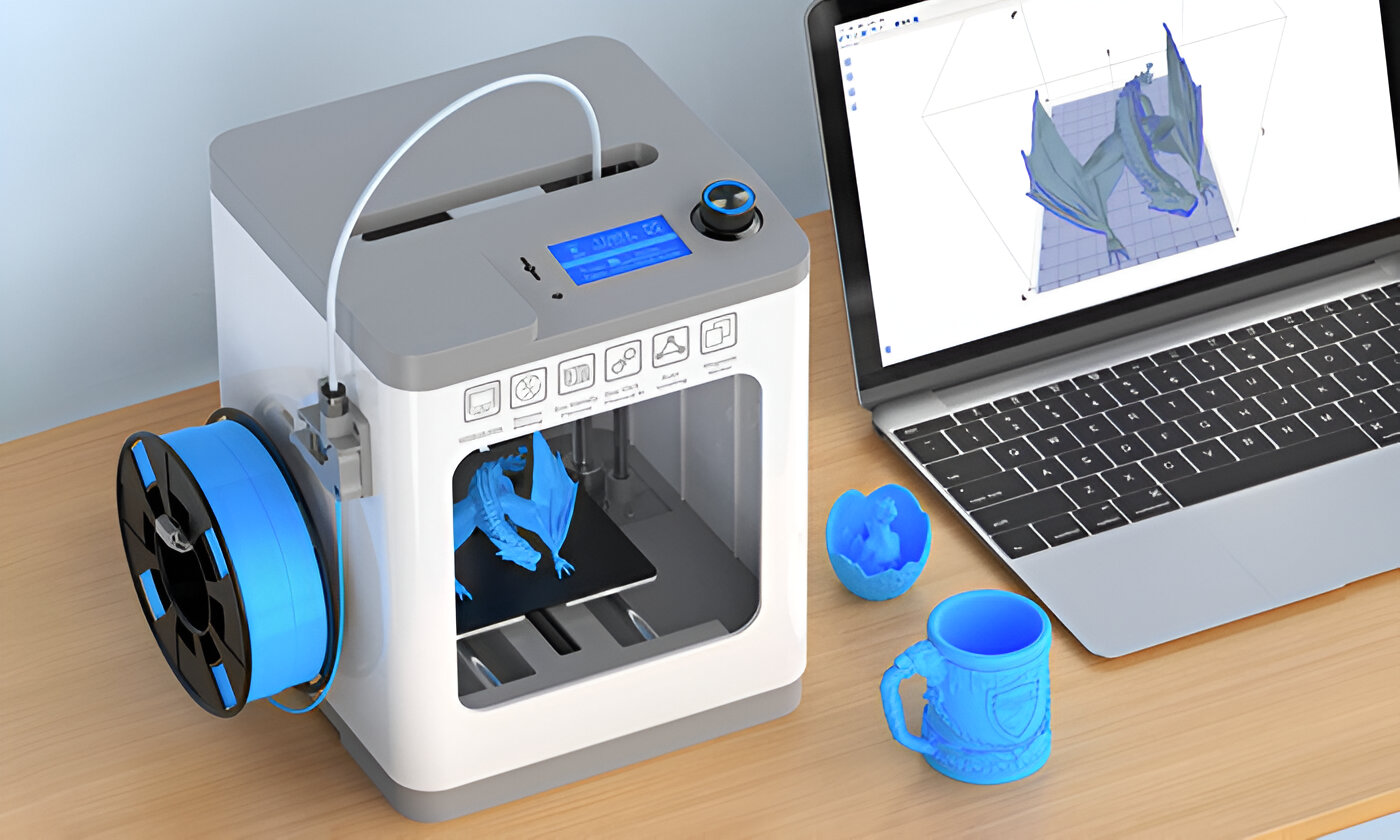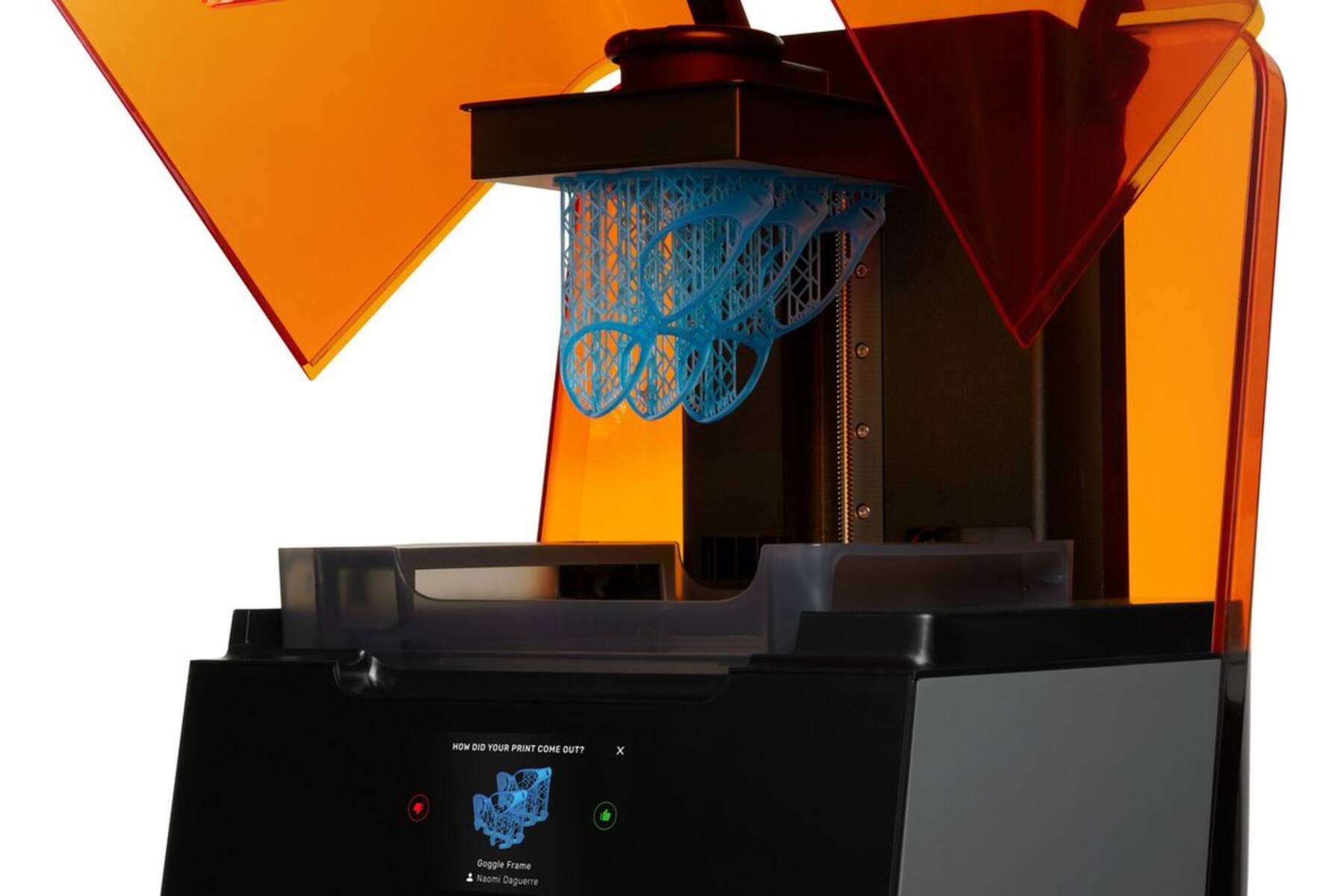Introduction
3D printing technology has revolutionized various industries, from manufacturing to healthcare and even fashion. As the technology continues to advance, it’s important to understand the key factors that contribute to the quality of 3D prints. One of these crucial factors is resolution.
Resolution plays a significant role in 3D printing as it determines the level of detail, precision, and smoothness of the final printed object. It refers to the ability of a 3D printer to accurately reproduce the desired design or model.
In this article, we will delve into the concept of resolution in 3D printing, exploring its different types and factors that influence it. Additionally, we will discuss how resolution is measured in the context of 3D printing and the impact it has on print time. By the end, you will have a better understanding of resolution and be able to make informed decisions when choosing the right resolution for your 3D printing projects.
So, let’s dive into the fascinating world of 3D printer resolution and discover how it can transform your printing experience!
What Is Resolution?
Resolution refers to the level of detail and clarity that can be achieved in a 3D printed object. It is primarily determined by the precision of the printer’s movements and the layer thickness used during the printing process. A higher resolution results in smoother surfaces and finer details, while a lower resolution may produce more visible layers and less intricate designs.
Resolution is measured in terms of three main aspects: layer height, XY resolution, and Z resolution. Layer height refers to the thickness of each layer of material deposited by the 3D printer. XY resolution, also known as the lateral resolution, relates to the printer’s ability to accurately reproduce details in the X and Y axes. Z resolution, on the other hand, pertains to the printer’s ability to accurately move the build plate or nozzle in the Z-axis, affecting the vertical height precision of the print.
It is important to note that there is a trade-off between resolution and printing speed. Higher resolution prints require more time to complete due to the increased number of layers and finer movements required by the printer. On the other hand, lower resolution prints can be completed faster but may sacrifice detail and surface quality.
When deciding on the resolution for your 3D print, consider the intended purpose of the object. For functional parts that require precise dimensions and smooth surfaces, higher resolution is preferred. On the other hand, for prototypes, modeling, or objects where fine details are not crucial, a lower resolution might be more suitable.
Now that we understand what resolution is and its different components, let’s explore the factors that can affect 3D printer resolution and understand how they impact the final print quality.
Understanding Resolution in 3D Printing
Resolution is a critical aspect of 3D printing that directly affects the quality and intricacy of the final printed object. To better understand resolution in the context of 3D printing, let’s explore the key components and processes involved.
Firstly, layer height plays a significant role in determining the resolution of a 3D print. It refers to the thickness of each layer of material that is deposited by the 3D printer during the printing process. Smaller layer heights result in finer details and smoother surfaces since the printer can achieve more precise movements. On the other hand, larger layer heights may lead to visible layer lines and a less refined appearance.
The XY resolution, also known as the lateral resolution, focuses on the printer’s ability to accurately reproduce small details in the X and Y axes. This component is influenced by various factors like the mechanical precision of the printer, the type of nozzle or extruder used, and the material properties. A higher XY resolution allows for more intricate designs and sharper edges, resulting in a higher level of detail.
Z resolution, on the other hand, pertains to the printer’s ability to make precise movements in the vertical or Z-axis. It affects the accuracy and smoothness of the vertical surfaces of the print. A lower Z resolution may result in visible stepping or rough vertical surfaces, while a higher Z resolution can produce smoother and more precise prints.
It’s important to note that while smaller layer heights, higher XY resolution, and finer Z resolution generally lead to higher quality prints, these factors can also increase the printing time significantly. Higher resolutions often require more layers to be printed, resulting in longer print durations. Therefore, it is important to strike a balance between resolution, print quality, and time constraints.
Finally, the quality of the 3D printer itself can greatly influence the resolution capabilities. Factors such as the mechanical precision of the printer, the stability of the print bed, and the accuracy of the motors and belts all play a role in achieving high-resolution prints.
Understanding the different components that contribute to resolution in 3D printing is crucial in achieving the desired level of detail and quality in your prints. By considering layer height, XY resolution, Z resolution, and the overall printer quality, you can make informed decisions when selecting the appropriate settings for your prints.
Factors That Affect 3D Printer Resolution
Several factors can significantly impact the resolution of a 3D printer and determine the level of detail and quality achievable in the final printed object. Understanding these factors is essential for optimizing resolution and obtaining the desired results. Let’s explore the key elements that influence 3D printer resolution.
1. Nozzle Diameter: The diameter of the nozzle or extruder used in the 3D printer plays a crucial role in determining resolution. Smaller nozzle diameters allow for finer details and higher resolution prints, while larger nozzles result in faster printing but with reduced detail and resolution.
2. Material Properties: The properties of the filament or material being used also have an impact on resolution. Materials with higher viscosity or a tendency to ooze may lead to less precise prints, resulting in reduced resolution. Choosing materials specifically designed for high-resolution printing can help achieve finer details.
3. Printer Calibration: Proper calibration of the 3D printer is crucial for achieving optimal resolution. Calibration ensures that the printer’s movements are accurate and precise, resulting in sharper details and improved resolution in the final prints. Regular calibration maintenance is essential to maintain consistent resolution over time.
4. Bed Leveling: Ensuring the print bed is properly leveled is essential for achieving uniform layer height and consistent resolution throughout the print. A misaligned or uneven print bed can produce prints with varying quality and resolution, particularly in the first few layers.
5. Print Speed: The speed at which the printer moves and deposits material can influence resolution. Slower print speeds allow for more precise movements, resulting in higher resolution prints. However, slower print speeds can significantly increase the printing time.
6. Mechanical Stability: The overall mechanical stability of the 3D printer also affects resolution. A sturdy frame, reliable motors, and properly tensioned belts and pulleys contribute to the printer’s ability to achieve accurate movements and consistent resolution.
7. Software Settings: The settings and parameters configured in the slicing software can determine the level of resolution in the final print. Adjusting parameters such as layer height, infill density, and wall thickness can significantly impact resolution. Experimenting with these settings can help find the balance between resolution and print time.
By considering these factors and optimizing the printer’s configuration and settings, it is possible to achieve higher resolution prints with greater detail and quality. It’s important to experiment and fine-tune these variables based on the specific requirements of your 3D printing projects.
Types of Resolution: Layer Height, XY Resolution, and Z Resolution
Resolution in 3D printing encompasses various aspects, with three primary types of resolution: layer height, XY resolution, and Z resolution. These types collectively contribute to the overall quality and level of detail in a 3D printed object. Let’s explore each type in more detail.
1. Layer Height: Layer height refers to the thickness of each layer of material deposited by the 3D printer during the printing process. It is one of the key factors influencing the vertical resolution of a print. Smaller layer heights result in more layers being printed, achieving greater detail and smoother surfaces. However, printing with smaller layer heights also increases the overall print time.
2. XY Resolution: XY resolution, also known as the lateral resolution, pertains to the printer’s ability to accurately reproduce fine details in the X and Y axes. It is determined by various factors such as the mechanical precision of the printer, the type of nozzle or extruder used, and the properties of the printing material. Higher XY resolution enables the printer to produce sharper edges and intricate designs, resulting in a higher level of detail.
3. Z Resolution: Z resolution is concerned with the printer’s ability to accurately move the build plate or nozzle in the Z-axis, affecting the precision and smoothness of the vertical height in the print. It contributes to the overall vertical resolution and surface quality of the printed object. A lower Z resolution may result in visible stepping or rough vertical surfaces, while a higher Z resolution can produce smoother and more precise prints.
It’s important to find the right balance among these types of resolution based on the desired outcome and considerations like print time. Smaller layer heights and higher XY and Z resolutions generally result in finer details and smoother surfaces. However, these settings also increase the printing time. On the other hand, larger layer heights and lower resolutions can lead to faster prints but sacrifice some level of detail and surface quality.
Consider the purpose and requirements of your 3D prints when adjusting these resolution parameters. Functional parts that require precise dimensions and smooth surfaces may benefit from higher resolutions, while prototypes or models might be suitable with lower resolutions. Balancing the requirements of the specific project with the constraints of time and resource efficiency is key to achieving optimal results.
Understanding the different types of resolution in 3D printing allows you to make informed decisions when adjusting the settings and parameters of your prints. By finding the right combination of layer height, XY resolution, and Z resolution, you can achieve the level of detail and quality that best suits your needs and goals.
How is Resolution Measured in 3D Printing?
In 3D printing, resolution is measured using different metrics that quantify the level of detail and precision achievable in the final printed object. These metrics help determine the resolution capabilities of a 3D printer. Let’s explore how resolution is commonly measured in the context of 3D printing.
1. Layer Height: Layer height is one of the most straightforward measures of resolution in 3D printing. It refers to the thickness of each layer of material that the printer deposits. Smaller layer heights result in finer details and smoother surfaces, enabling higher resolution prints. The layer height is specified in the slicing software before starting a print.
2. XY Resolution: XY resolution, also known as the lateral resolution or the printer’s positional accuracy, refers to the level of precision in reproducing details in the X and Y axes. It is measured in terms of the smallest feature size that can be accurately printed. The XY resolution is influenced by factors such as the printer’s mechanical precision, the size of the nozzle or extruder, and the material being used. Generally, a smaller XY resolution indicates higher printing precision and finer details.
3. Z Resolution: Z resolution defines the accuracy in the vertical or Z-axis of the printer. It determines the level of detail and smoothness in the vertical surfaces of the print. Z resolution is typically measured as the distance or height between each layer. A smaller Z resolution signifies higher vertical precision and smoother surfaces.
While layer height, XY resolution, and Z resolution are the primary metrics used to measure resolution in 3D printing, it’s important to note that other factors can have an impact as well. These factors include the stability and calibration of the printer, the material properties, and the nozzle size. The overall resolution capabilities of a 3D printer are a combination of these factors working together.
Understanding how resolution is measured in 3D printing allows you to assess the capabilities of different printers and make informed decisions when setting the resolutions for your prints. By considering these metrics and adjusting the necessary settings in the slicing software, you can achieve the desired level of detail and precision in your 3D printed objects.
The Relationship Between Resolution and Print Time
In 3D printing, there is a direct relationship between resolution and print time. Adjusting the resolution settings of a 3D printer can significantly impact the time it takes to complete a print. Let’s explore the relationship between resolution and print time and understand how they influence each other.
Higher resolution prints require more detail and precision, resulting in more layers being printed and finer movements of the printer’s components. As a result, prints with higher resolutions generally take longer to complete. This is primarily because smaller layer heights and finer movements require more time for the printer to complete each layer and position the nozzle accurately.
On the other hand, lower resolution prints can be completed faster as they require fewer layers and less intricate movements. With larger layer heights and less precision required, the printer can deposit more material per layer and move at a faster pace, reducing the overall print time significantly.
It’s essential to find the right balance between resolution and print time based on the specific requirements of your project. For instance, if you need a high level of detail and smooth surfaces, you may opt for higher resolutions that result in longer print times. Conversely, if speed is more critical and you can compromise on some of the fine details, lower resolutions may be suitable.
Moreover, it’s worth noting that the relationship between resolution and print time is not linear. The increase in print time becomes more pronounced as the resolution is set to higher levels. For example, going from a medium to high resolution may result in a substantial increase in print time, while the difference between low and medium resolutions may be less noticeable.
Additionally, it’s important to consider other factors that affect print time, such as the complexity and size of the model, the infill density, and the print speed. These variables can interact with the chosen resolution and impact the overall time required to complete a print.
By understanding the relationship between resolution and print time, you can make informed decisions when choosing the appropriate resolution for your prints. Balancing the desired level of detail, print time constraints, and other project requirements will help you achieve successful 3D prints that meet your specific needs.
Choosing the Right Resolution for Your 3D Prints
When it comes to 3D printing, choosing the right resolution is crucial to achieve the desired level of detail and quality in your prints. It involves finding the balance between the intricacy of the design, print time constraints, and the capabilities of your 3D printer. Let’s explore some factors to consider when selecting the resolution for your 3D prints.
1. Purpose of the Print: Consider the intended use of the 3D print. If you’re creating a functional part that requires precise dimensions and smooth surfaces, higher resolution may be necessary to achieve the desired outcome. On the other hand, if the print is for prototyping or modeling purposes, you may be able to use a lower resolution to save time and resources.
2. Level of Detail: Evaluate the level of detail required for your specific design. If the design consists of intricate features and fine details, higher resolution settings will be necessary to accurately reproduce those details. However, if the design is relatively simple or doesn’t require intricate details, a lower resolution may suffice without compromising the overall quality.
3. Time Constraints: Consider the time available for the print to be completed. Higher resolutions typically result in longer print times due to the increased number of layers and finer movements required by the printer. If time is a significant factor, you may need to opt for lower resolution settings to expedite the printing process while accepting some loss in fine details and surface quality.
4. Printer Capabilities: Understand the capabilities and limitations of your 3D printer. Different printers have specific resolution thresholds based on their mechanical capabilities, nozzle diameter, and other factors. Knowing these limits will allow you to select the maximum resolution that your printer can handle effectively without causing issues or compromising the print quality.
5. Material Considerations: Different materials behave differently at varying resolutions. Some materials may require higher resolutions to achieve satisfactory surface quality, while others may not demonstrate significant improvements at higher resolutions. Experimenting with different resolutions for specific materials can help you find the optimal settings for your prints.
6. Iterative Printing: If achieving the perfect resolution proves challenging, consider using an iterative approach. Start with a lower resolution and gradually increase it until you reach the desired level of detail. This iterative process can help you strike the right balance between resolution and print time, ultimately achieving the best possible result.
By taking these factors into account, you can make an informed decision when selecting the right resolution for your 3D prints. It’s essential to consider the purpose of the print, the desired level of detail, time constraints, printer capabilities, and specific material considerations. With the right resolution settings, you can ensure successful and high-quality prints that meet your expectations and requirements.
Conclusion
In conclusion, resolution is a vital aspect of 3D printing that influences the level of detail, precision, and quality of the final printed object. It is determined by factors such as layer height, XY resolution, and Z resolution. Understanding these components allows you to make informed decisions when selecting the appropriate resolution for your 3D prints.
Higher resolutions result in finer details and smoother surfaces, but they also increase print time. Lower resolutions sacrifice some detail but can be completed faster. By striking the right balance between resolution and print time, you can optimize the printing process to meet your specific requirements.
Factors such as nozzle diameter, material properties, printer calibration, and stability can also affect 3D printer resolution. Taking these factors into consideration and optimizing the printer settings will contribute to achieving the best possible resolution in your prints.
When choosing the right resolution, consider the purpose of the print, the desired level of detail, time constraints, and the capabilities of your 3D printer. By assessing these factors, you can make well-informed decisions that result in successful and high-quality 3D prints.
Remember, resolution is just one aspect of the 3D printing process. It is important to consider other factors such as material selection, design optimization, and post-processing techniques to further enhance the overall quality of your prints. With practice and experimentation, you can unlock the full potential of 3D printing and create remarkable objects with outstanding detail and precision.







